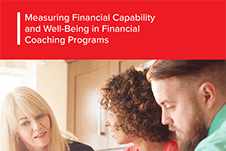Discover financial empowerment resources
Discover financial empowerment resources
This brief describes the data collected and lessons gleaned from the Financial Coaching Impact & Evaluation Fellowship, which took place over the course of 10 months in 2017. Ultimately, this brief argues that the Financial Well-Being Scale and the Financial Capability Scale are promising...

During childhood and youth we build the foundations for financial well-being later in life, acquiring the knowledge, skills, attitudes, and personality traits that enable us to manage our finances as adults. This article reviews literature from consumer science, developmental psychology, and allied...
Indicators are the data that help you assess whether or not you are on track to achieve the desired results identified in your logic model. They are also useful to communicate your program’s potential impact to funders and stakeholders. Programs that consistently collect and review data to track...
An important part of program design is determining how to assess the program’s effects on the clients and their community. Typically, we assess program effectiveness by measuring the changes in outcomes—the changes in the conditions of your clients, their families and their communities—that...
A well-designed logic model can provide the foundation to support your efforts to collect the data necessary to answer important questions about the performance of the program. A logic model can be developed and formatted in many ways. In this document, we are not prescribing the “best...
